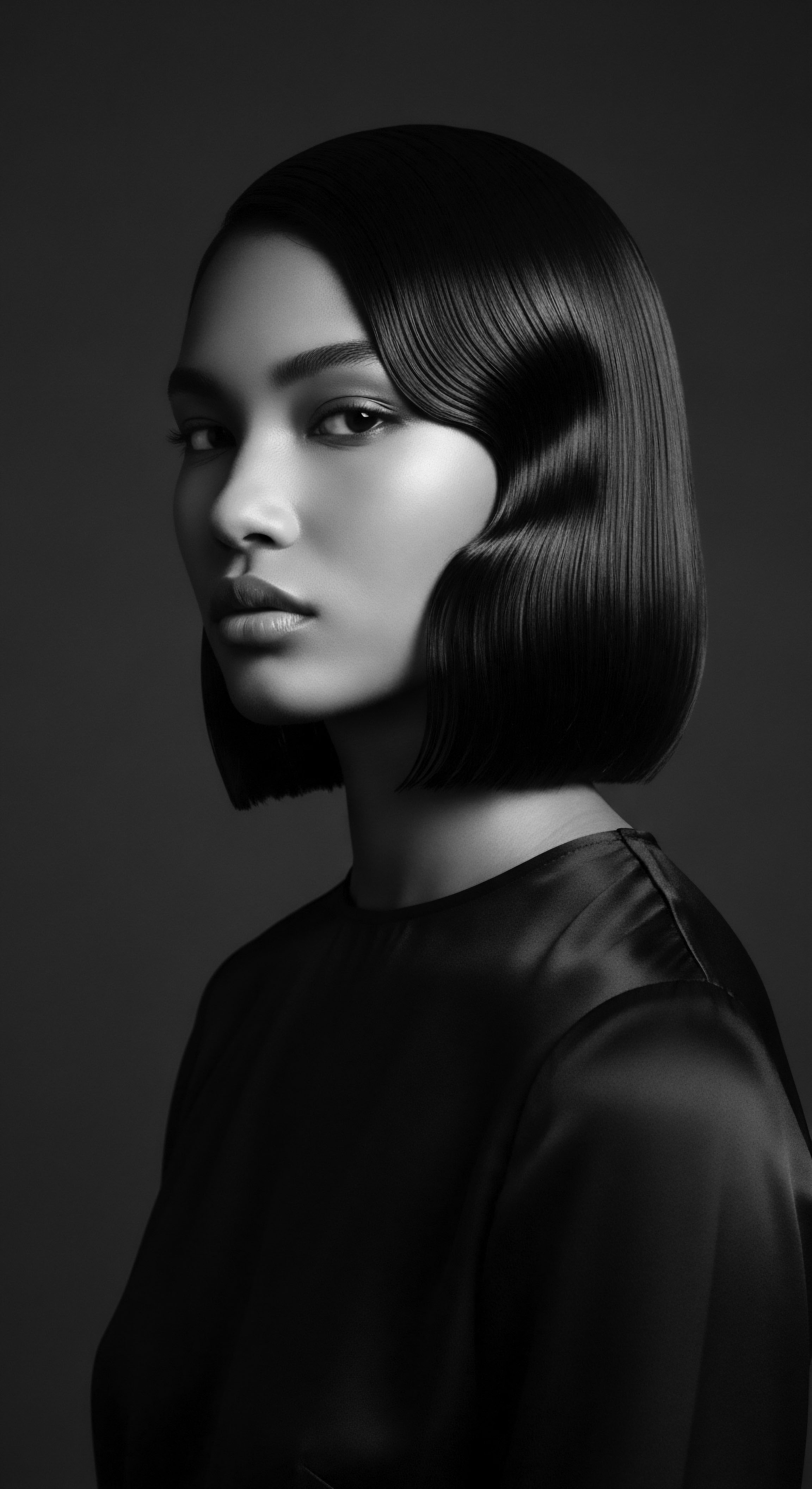
Fundamentals
The Beauty Industry, at its core, represents a vast and intricate global network of enterprises dedicated to the creation, distribution, and promotion of products and services that enhance, alter, or maintain human appearance. This encompasses everything from skincare formulations and cosmetic adornments to hair care preparations, fragrances, and aesthetic treatments. Its contemporary manifestation is often seen through the lens of mass production and globalized markets, yet its foundational impulses stretch back to the earliest human civilizations. The primary purpose of this industry, in its simplest delineation, is to meet a deep-seated human desire for self-expression, well-being, and social presentation.
For Roothea, and through the ‘Soul of a Strand’ ethos, the Beauty Industry holds a far more resonant meaning, particularly when considering the rich heritage of textured hair. Here, the industry is not merely a commercial entity; it functions as a dynamic reflection of cultural practices, historical struggles, and enduring community resilience. Its meaning shifts from a purely transactional exchange to a deeper exploration of identity, belonging, and ancestral wisdom.
The Beauty Industry, for textured hair communities, is a living chronicle of ancestral practices, enduring resilience, and evolving self-expression.
Understanding the Beauty Industry through the lens of textured hair requires an initial recognition of hair’s biological and cultural significance. Hair, for many Black and mixed-race communities, has always been more than a physical attribute. It has served as a profound marker of Identity, social status, spiritual connection, and even a medium for coded communication.
The earliest forms of what we now call the “Beauty Industry” for textured hair were not commercial ventures but communal rituals, passed down through generations. These practices, steeped in natural ingredients and collective care, laid the groundwork for a distinct heritage of hair wellness.

Echoes from the Source ❉ Ancient Roots of Hair Care
Before the rise of modern commerce, hair care practices were deeply integrated into daily life and cultural ceremonies across various African societies. These traditions represent the primordial “Beauty Industry” for textured hair. For example, among the Wolof, Mende, Mandingo, and Yoruba societies, hair was intricately woven into the cultural fabric, conveying a multitude of meanings and holding spiritual power. Hairstyles could signal geographic origins, marital status, age, religious affiliation, ethnic identity, wealth, and communal rank.
It was widely believed that hair served as a conduit for spiritual energy, connecting individuals to deities and ancestors. Leaders, both men and women, often wore the most ornate styles, signifying their elevated standing.
Traditional care rituals involved a thoughtful selection of natural ingredients, often derived from local flora. These elemental preparations formed the basis of ancient hair wellness. The meticulous process of washing, oiling, braiding, and decorating hair, sometimes spanning hours or even days, was not merely about aesthetics. These sessions created opportunities for social bonding, sharing stories, and transmitting ancestral knowledge across generations.
- Shea Butter ❉ Revered across West Africa, this rich butter from the shea tree provided deep moisture and protection for coils and curls, shielding them from environmental elements.
- Argan Oil ❉ Hailing from Morocco, this liquid gold nourished strands, imparted shine, and soothed the scalp, reflecting a heritage of natural conditioning.
- Baobab Oil ❉ Sourced from the “tree of life,” this oil offered strengthening properties, aiding in the maintenance of hair integrity in various climates.
- Kalahari Melon Seed Oil ❉ Utilized in southern Africa, this lightweight oil provided hydration and balanced scalp health, a testament to ingenious adaptation to arid environments.
These ancient practices, far from being simplistic, embodied a sophisticated understanding of natural elements and their symbiotic relationship with hair biology. They underscore that the fundamental definition of the Beauty Industry, especially concerning textured hair, originates not in factories, but in the earth, in community, and in reverence for self.
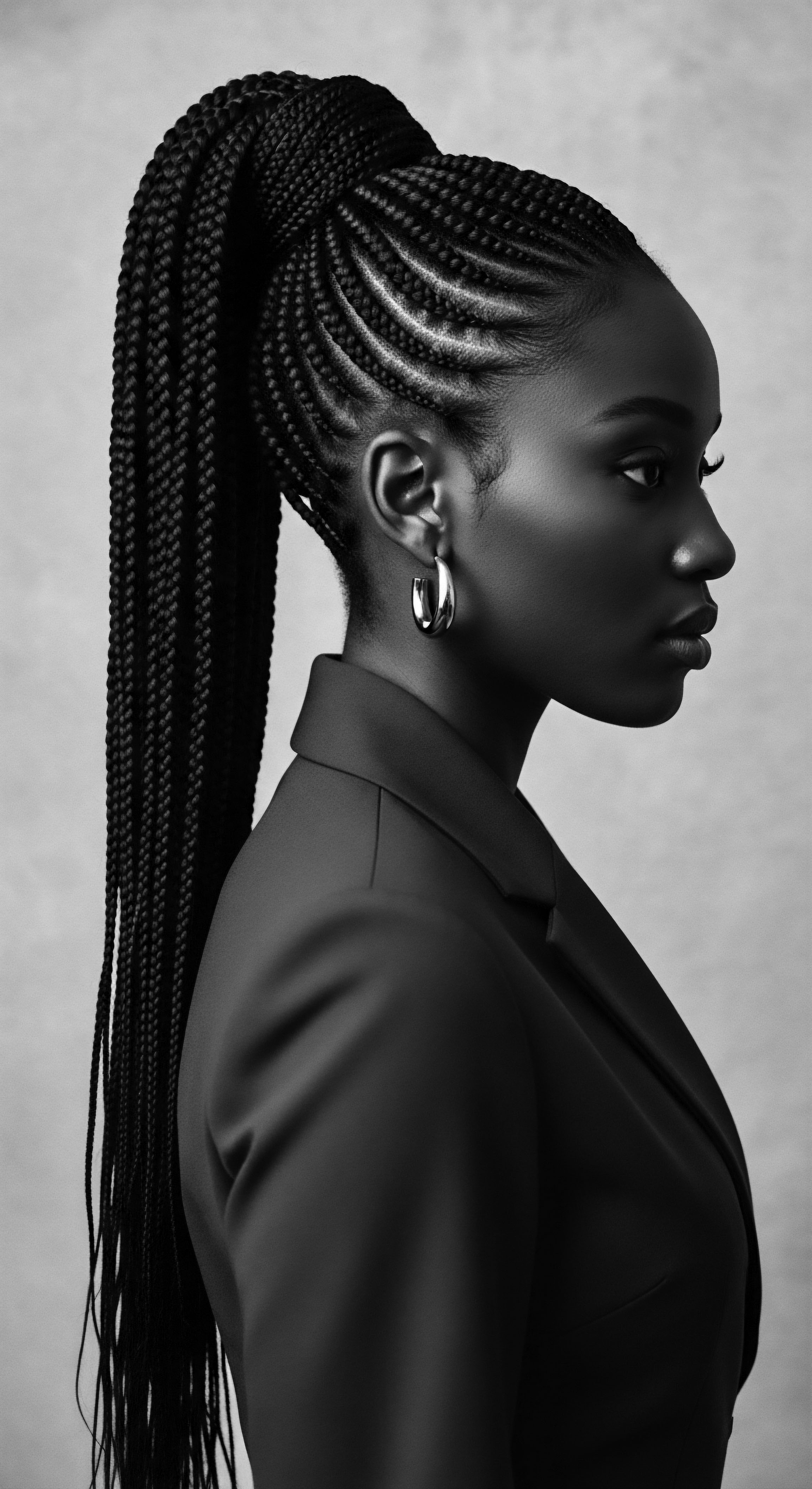
Intermediate
Moving beyond its elemental beginnings, the Beauty Industry’s meaning expands to encompass the historical evolution of care practices, particularly as they intersected with the complex experiences of Black and mixed-race communities. This intermediate exploration reveals how ancestral wisdom persisted and adapted, even as external forces sought to reshape perceptions of beauty and hair. The tender thread of heritage, though strained, never truly broke.
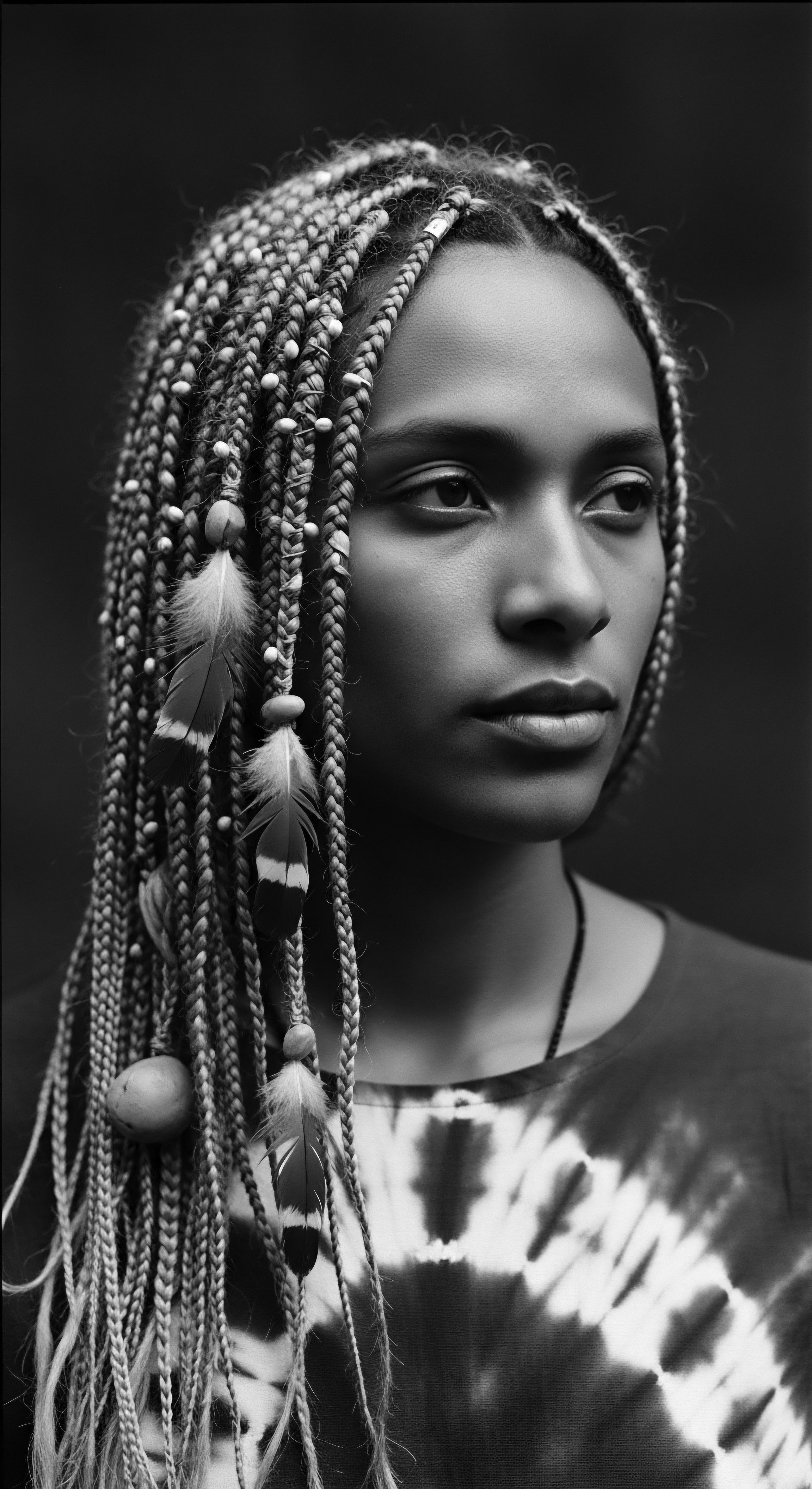
The Tender Thread ❉ From Ancestral Care to Diasporic Adaptation
The transatlantic slave trade initiated a period of profound disruption, forcibly severing millions from their ancestral lands and traditional practices. A deliberate act of dehumanization involved shaving the heads of enslaved individuals, aiming to strip them of their identity and cultural ties. Despite these brutal efforts, the deep-seated value placed on hair persisted.
Enslaved Africans, with remarkable resilience, continued to adapt and preserve their hair traditions, often using whatever limited resources were available. This included utilizing grease for lubrication and even metal ornaments designed for grooming sheep as combs.
Hair became a subtle, yet potent, form of resistance and communication within enslaved communities. Braiding patterns, specific to various regions and ethnic groups, were used to identify kin and differentiate communities. Stories tell of enslaved women braiding rice seeds into their hair, a survival tactic that also preserved cultural memory.
Cornrows, in particular, served as intricate maps, encoding escape routes for those seeking freedom. This period saw the informal beginnings of a diasporic beauty economy, born out of necessity and cultural preservation.
The Beauty Industry, shaped by the diasporic journey, stands as a testament to the enduring spirit of self-preservation and communal innovation in the face of adversity.
After emancipation, the demand for specialized textured hair care grew, as mainstream beauty companies largely ignored the unique needs of Black hair. This void led to the organic rise of “kitchen beauty shops,” informal spaces where Black women, often from their homes, created and sold homemade hair products and offered styling services. These establishments became more than just places for hair grooming; they transformed into vital social and economic hubs within Black communities, offering spaces for connection, conversation, and collective support.
The early 1900s witnessed a significant acceleration of this burgeoning industry. African American women, facing limited employment options, found avenues for economic independence through hair care entrepreneurship. This era saw the emergence of influential figures who built empires by catering specifically to Black hair needs.
| Era Pre-Colonial Africa |
| Key Developments & Cultural Significance Hair as identity ❉ Styles indicated status, age, tribe. Communal care ❉ Rituals strengthened social bonds. Natural ingredients ❉ Shea butter, argan oil for nourishment. |
| Era Transatlantic Slave Trade |
| Key Developments & Cultural Significance Hair shaving ❉ Act of dehumanization. Hidden resistance ❉ Braids as maps, seeds for survival. Limited resources ❉ Ingenuity with available materials. |
| Era Post-Emancipation (Early 1900s) |
| Key Developments & Cultural Significance "Kitchen Beauty Shops" ❉ Rise of informal, Black-owned enterprises. Economic independence ❉ Avenues for Black women entrepreneurs. Community hubs ❉ Salons as social and political centers. |
| Era Civil Rights Era (1960s-70s) |
| Key Developments & Cultural Significance Natural Hair Movement ❉ Afro as a symbol of Black pride and resistance. Rejection of Eurocentric standards ❉ A return to ancestral aesthetics. |
| Era These periods collectively highlight the enduring power of textured hair as a cultural anchor, even amidst profound societal shifts. |
The economic strength of this self-made industry was remarkable. By 1920, the African American beauty industry, largely driven by hair care, generated annual revenues estimated at over $75 million, a substantial sum for that time. This demonstrated extraordinary economic self-sufficiency and deep cultural pride, underscoring the vital role of the Beauty Industry in supporting Black communities when mainstream markets neglected them (Walker, 2007). This historical example serves as a powerful testament to the ingenuity and self-determination embedded within the heritage of textured hair care.
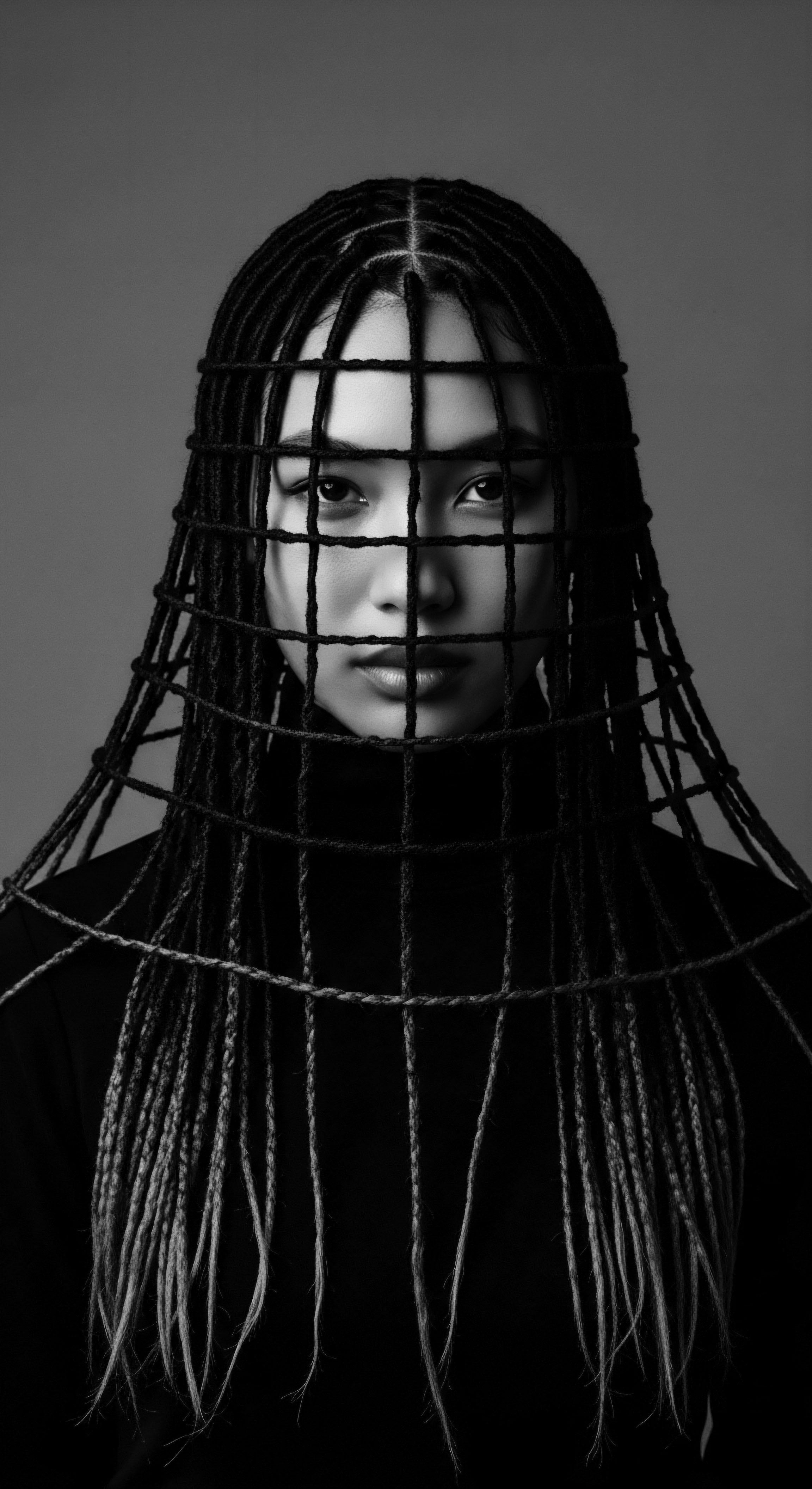
Academic
The academic delineation of the Beauty Industry, particularly through the lens of textured hair heritage, moves beyond a simple market definition to a profound analysis of its sociocultural, economic, and even political dimensions. This examination reveals the industry as a complex adaptive system, shaped by biological realities, historical oppression, cultural resilience, and ongoing quests for self-determination. The meaning of the Beauty Industry, in this context, is a dynamic interplay of power, identity, and the enduring human connection to ancestral practices. It is a field where elemental biology meets deep cultural narratives, yielding insights into human behavior and societal structures.

The Unbound Helix ❉ Intersections of Biology, Culture, and Commerce
From an academic standpoint, the Beauty Industry’s relationship with textured hair is a compelling case study in the sociology of consumption, the anthropology of appearance, and the economics of niche markets born from systemic exclusion. Hair, in its biological composition, exhibits remarkable diversity across human populations. Textured hair, often characterized by its unique curl patterns (from wavy to coily), distinct cuticle structure, and propensity for dryness, possesses inherent needs that differ from straighter hair types.
Modern hair science, through disciplines like trichology and dermatological research, increasingly validates the efficacy of traditional care practices that have long recognized these unique characteristics. For instance, the emphasis on moisture retention through oils and butters, deeply rooted in African ancestral methods, finds scientific corroboration in understanding the lipid barrier function of the scalp and hair shaft in coily textures.
The historical trajectory of the Beauty Industry, especially as it pertains to Black and mixed-race hair, is inseparable from the legacies of colonialism and racial subjugation. During the transatlantic slave trade, the forced shaving of heads served as a symbolic act of stripping identity, severing ties to ancestral communities where hair was a crucial marker of societal position, age, and communal identity. This deliberate erasure extended into post-emancipation periods, where Eurocentric beauty standards were imposed, often leading to the widespread use of chemical straighteners to conform to societal norms for employment and social acceptance. The very products that promised “manageability” often inflicted damage, creating a cycle of chemical dependence and hair fragility.
The Beauty Industry’s academic interpretation uncovers a historical tension between imposed beauty standards and the resilient reclamation of ancestral hair traditions.
The rise of the Black beauty industry, therefore, was not merely a commercial phenomenon; it represented a profound act of cultural self-preservation and economic agency. As early as the late 19th and early 20th centuries, pioneering Black women entrepreneurs, such as Madam C.J. Walker and Annie Turnbo Malone, built significant enterprises by developing products tailored to textured hair, which mainstream companies ignored. These ventures provided not only essential products but also economic opportunities and spaces of communal gathering (salons and barbershops) that served as centers for social and political discourse within segregated communities.
The success of these Black-owned businesses demonstrated an economic power that was often overlooked by broader markets. For example, the Black hair care market in the United States was valued at approximately USD 7.84 billion in 2024 and is projected to reach USD 12.72 billion by 2033, growing at a compound annual growth rate of about 6% from 2025 to 2033. This economic power, historically, was built from within, despite systemic barriers. Black consumers, particularly women, continue to represent a disproportionately significant segment of the hair care market, spending considerably more on ethnic hair and beauty products compared to their non-Black counterparts. This sustained investment underscores a deep commitment to culturally relevant care.
The academic exploration of the Beauty Industry also delves into the complex interplay of cultural identity and product development. The Natural Hair Movement, gaining significant momentum from the 1960s Civil Rights era with the symbolic rise of the Afro, and experiencing a powerful resurgence in the 21st century, represents a collective assertion of identity and a rejection of Eurocentric beauty ideals. This movement has reshaped the market, driving demand for products that celebrate and support natural texture, moving away from chemical straighteners towards formulations that promote hair health and honor ancestral aesthetics.
This shift highlights the dynamic relationship between consumer demand, cultural awakening, and industry response. However, academic inquiry also points to ongoing challenges. Despite the substantial spending power of Black consumers, ownership within the broader Black hair care market remains disproportionately low for Black entrepreneurs, with a significant portion controlled by non-Black entities.
This raises questions about equity, wealth distribution, and the authentic representation of cultural needs within the industry. The phenomenon of “cosmetic colonialism,” where traditional practices and ingredients are commodified without proper attribution or benefit to originating communities, remains a relevant area of critical study.
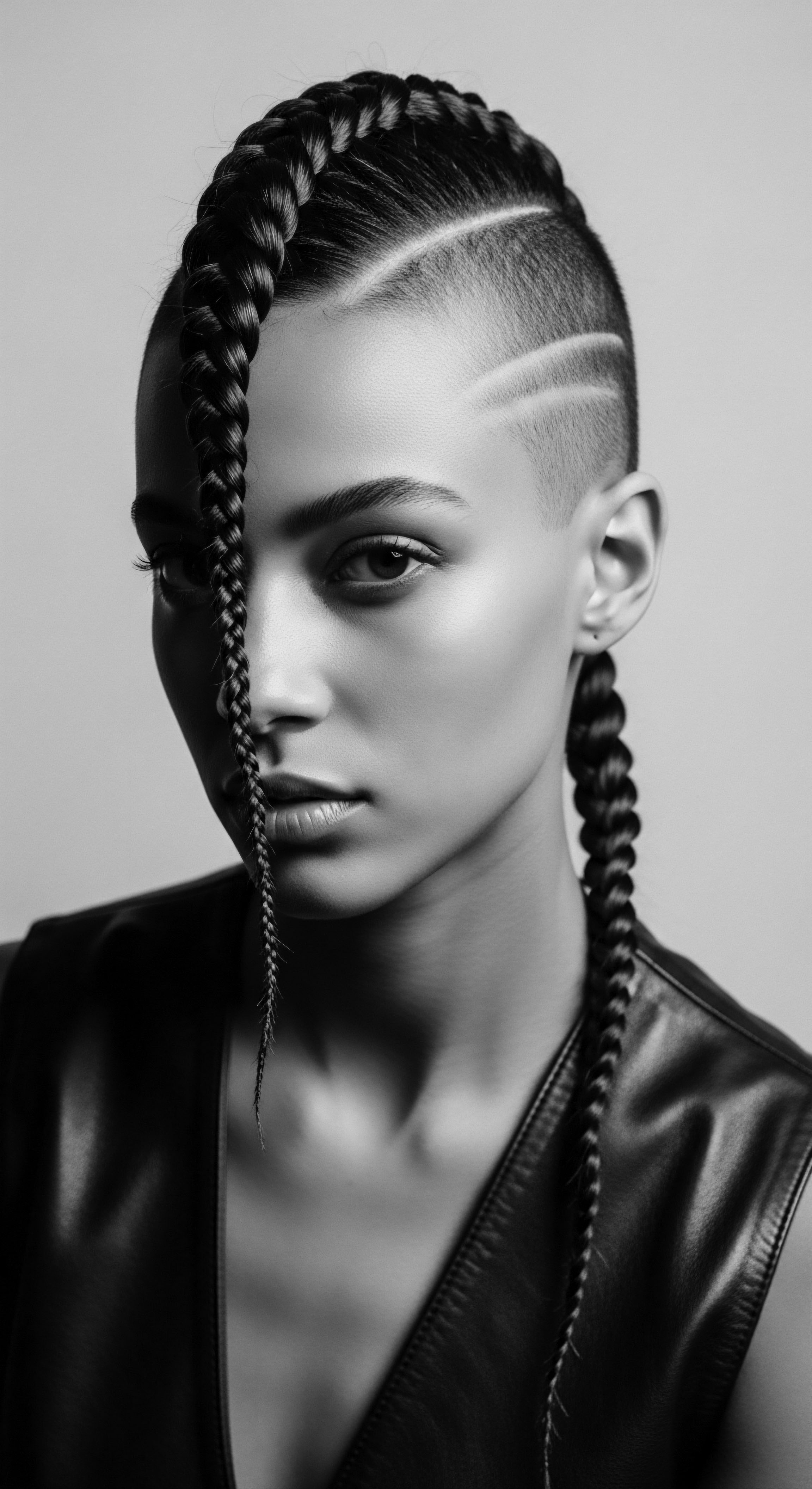
Deep Currents ❉ Ethnobotany and the Wisdom of Ancestors
An academic perspective on the Beauty Industry cannot disregard the profound contributions of ethnobotany, particularly concerning African plants and their applications in hair care. Ethnobotanical studies reveal a sophisticated understanding of plant properties, passed down through oral traditions and communal practice for millennia. These practices, which predate modern scientific methodologies, often demonstrate remarkable efficacy that contemporary research now seeks to understand and validate.
Consider the ancient use of plants like Moringa Oleifera for its conditioning and cleansing properties, or the application of various plant-based oils and extracts to address scalp conditions and promote hair growth. These are not merely anecdotal remedies; they are the result of generations of empirical observation and refinement. Research in this domain often attempts to bridge traditional knowledge with modern scientific frameworks, exploring the biochemical mechanisms behind these ancient therapies. For instance, studies on African plants used for hair treatment are now investigating their potential links to systemic health, such as glucose metabolism, suggesting a deeper, holistic understanding of wellness that traditional practices inherently possessed.
The Beauty Industry, in its academic interpretation, therefore, becomes a field where historical anthropology, economic analysis, and molecular biology converge. It exposes how hair, a biological extension of the self, becomes a powerful symbol of identity, a site of historical conflict, and a source of profound cultural and economic resilience. The meaning of the Beauty Industry, from this academic viewpoint, is thus an evolving dialogue between scientific discovery and the timeless wisdom preserved within textured hair heritage.

Reflection on the Heritage of Beauty Industry
The journey through the Beauty Industry, particularly through the lens of textured hair heritage, reveals a story far richer and more complex than mere commerce. It is a profound meditation on survival, a testament to the unwavering spirit of Black and mixed-race communities to preserve and celebrate their unique strands. From the earliest whispers of ancestral care rituals, passed down through generations, to the vibrant, resilient marketplace of today, hair has served as an enduring symbol, a silent yet eloquent storyteller.
Each coil, curl, and wave holds within it the echoes of ancient wisdom, the strength of those who resisted erasure, and the joy of self-acceptance. The industry, in its purest sense, has been a vehicle for communal connection, economic autonomy, and artistic expression, even when faced with formidable pressures to conform. The very act of caring for textured hair, rooted in deep historical understanding, becomes a conscious connection to a living lineage. It is a daily ritual that honors the hands that first braided, the voices that first sang songs of healing, and the spirits that continue to guide us towards holistic well-being.
The ‘Soul of a Strand’ ethos reminds us that the true significance of the Beauty Industry lies not in its products alone, but in its capacity to mirror and magnify the rich, multifaceted heritage of textured hair. It invites us to recognize hair as a sacred part of our being, a vibrant thread connecting us to our past, anchoring us in the present, and propelling us towards a future where every texture is seen, celebrated, and deeply understood.
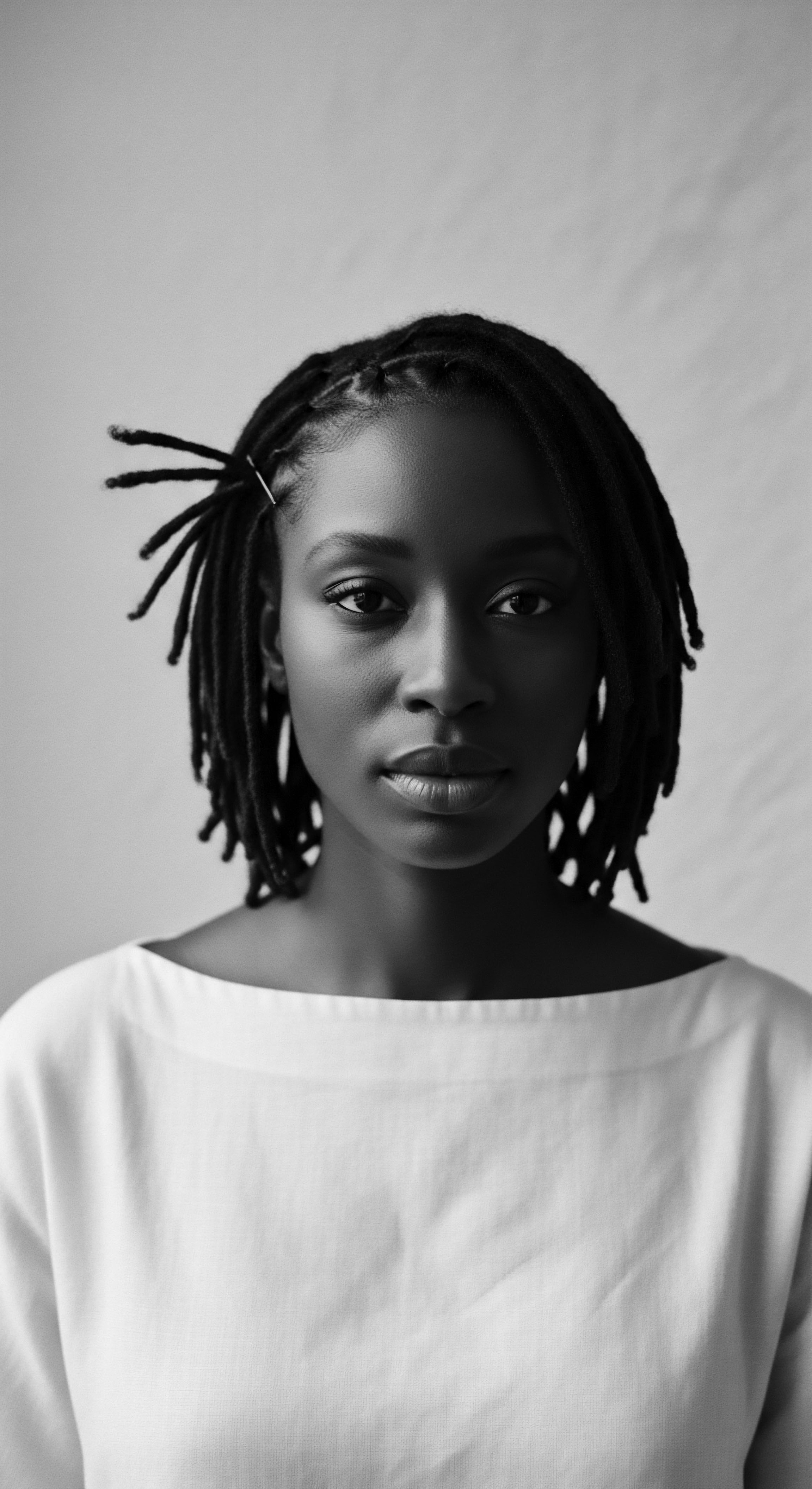
References
- Tharps, L. & Byrd, A. (2001). Hair Story ❉ Untangling the Roots of Black Hair in America. St. Martin’s Press.
- Byrd, A. & Tharps, L. (2014). Hair Story ❉ Untangling the Roots of Black Hair in America (Revised and Updated). St. Martin’s Griffin.
- Walker, A. (2007). Madam C.J. Walker ❉ The Making of an American Icon. Scribner.
- Gill, J. (2010). Beauty Shop Politics ❉ African American Women’s Quest for Political Power. University of Illinois Press.
- Patton, T. D. (2006). Our Own Kind of Freedom ❉ African American Women and the Struggle for Beauty, Self-Expression, and Empowerment. University of Illinois Press.
- Banks, I. (2000). Hair Matters ❉ Beauty, Power, and the Politics of Hair in African American Culture. New York University Press.
- Mercer, K. (1994). Welcome to the Jungle ❉ New Positions in Cultural Studies. Routledge.
- Tarlo, E. (2016). Entanglement ❉ The Secret Lives of Hair. Oneworld Publications.
- Hunter, L. (2011). Buying Beauty ❉ The Ethnic Beauty Market in North America. University of Toronto Press.
- Ebony Magazine. (Various Issues). Historical articles on Black beauty and entrepreneurship. Johnson Publishing Company.
